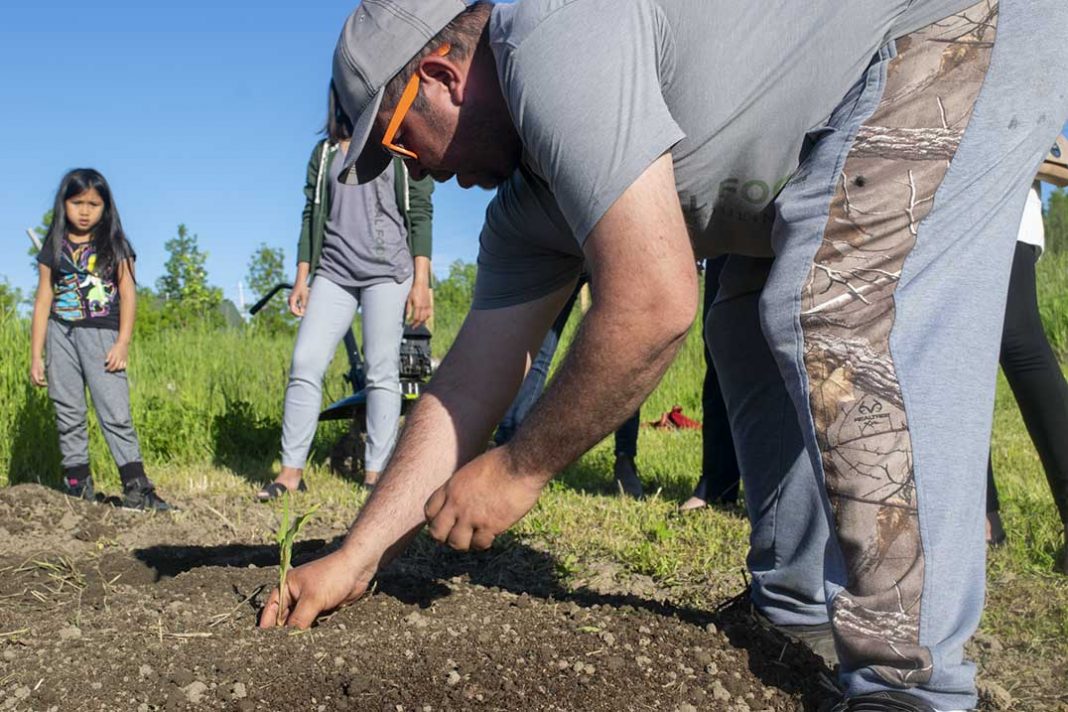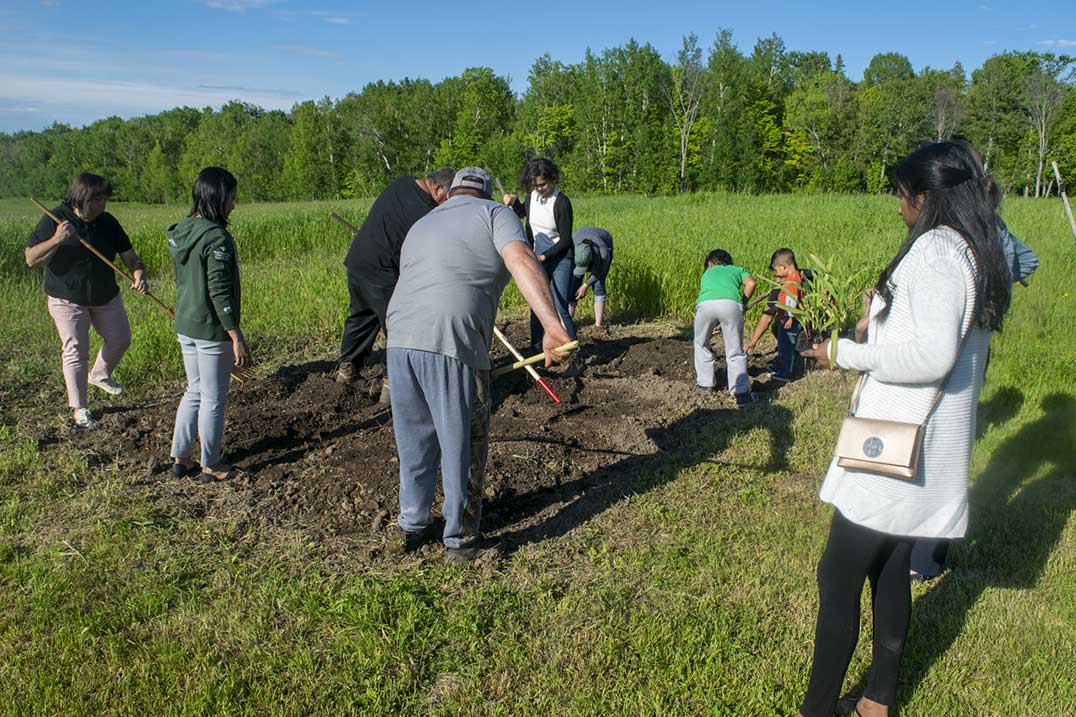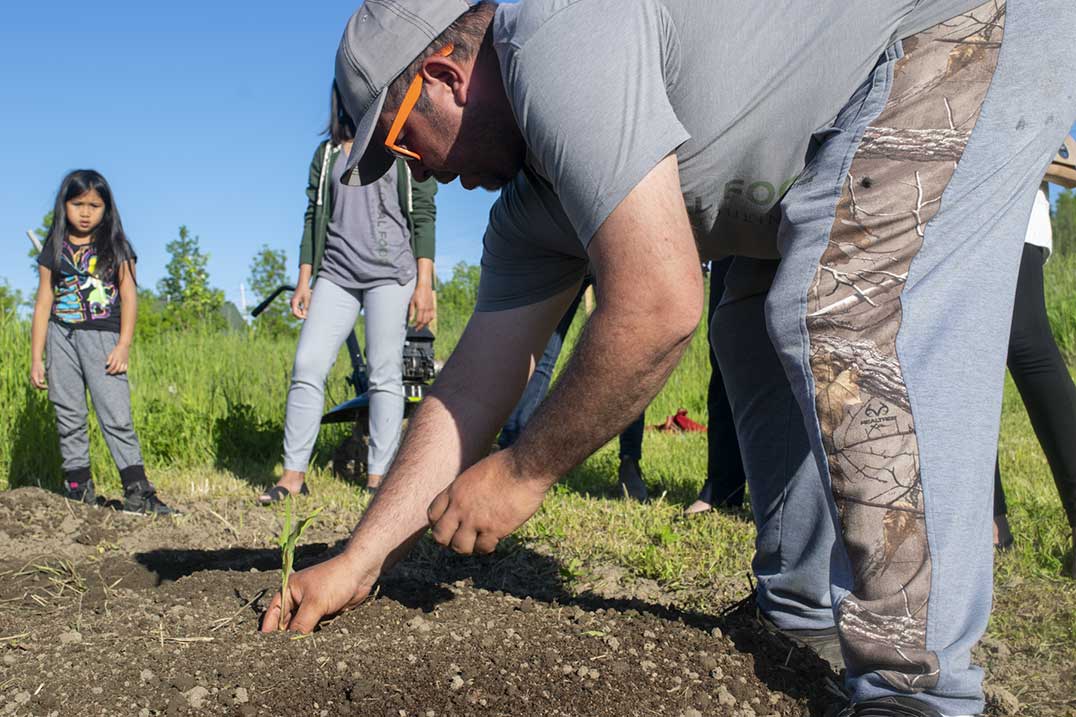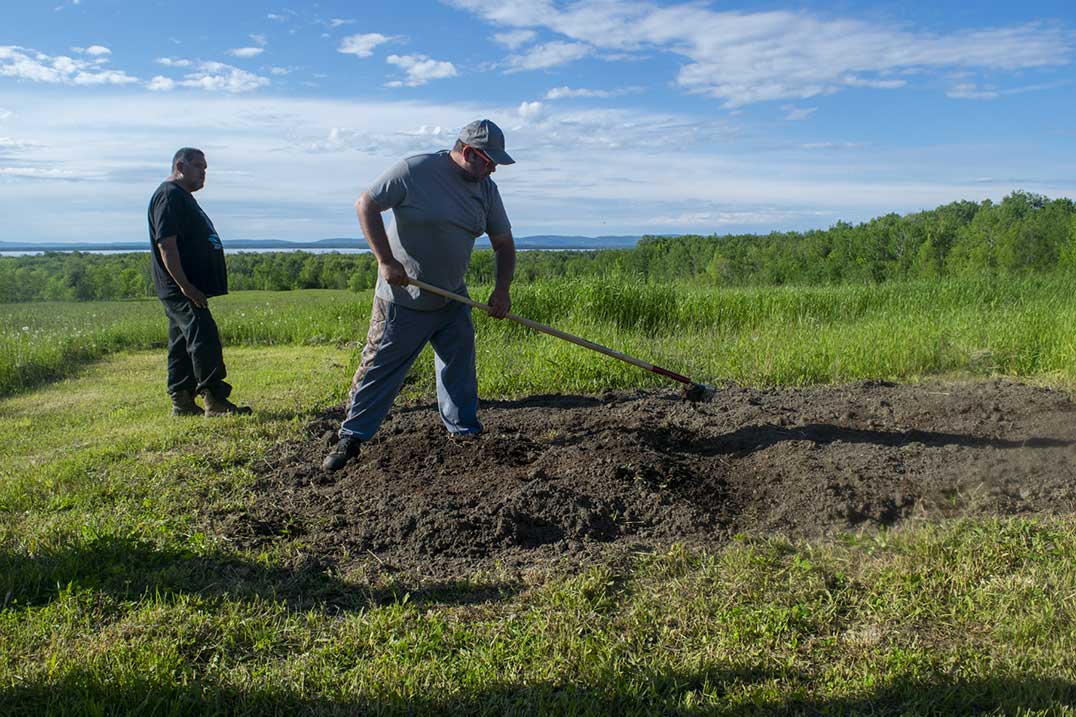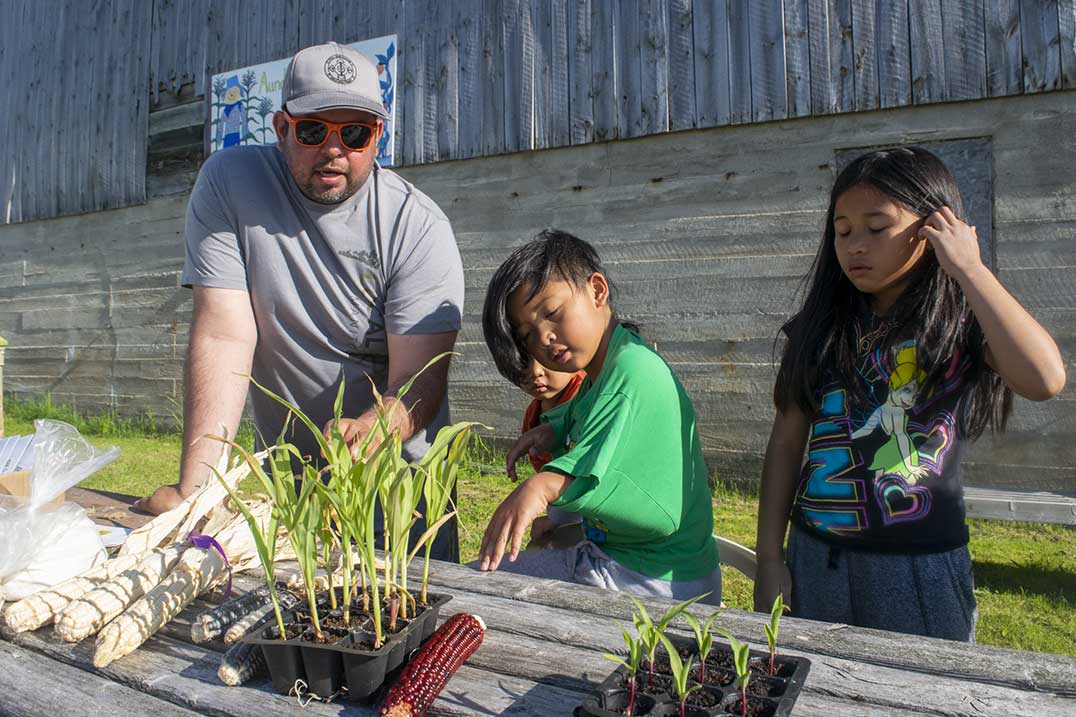AUNDECK OMNI KANING – Bed two of the Aundeck Omni Kaning community garden was a hub of activity recently as community members gathered to help plant Three Sisters mound gardens on a picturesque hilltop off Highway 540.
Debajehmujig Storytellers’ Richard Ashley Manitowabi was the main leader of the workshop, helping to co-ordinate the event alongside Manitoulin Community Fresh Food Initiative (MCFFI) project manager Kristin Bickell. MCFFI is part of the work of the Child Poverty Task Force and administered through Noojmowin Teg Health Centre.
Mr. Manitowabi has been involved with Debaj’s gardening program for several years and has been involved with co-ordinating seed swaps for heirloom seeds. He has also facilitated seed saving workshops which instruct participants how to responsibly cultivate their annual produce, saving a sufficient supply of seeds so subsequent seasons can similarly sprout several strong strains of savoury or sweet snacks for the sowing.
In his role as a Debaj storyteller, Mr. Manitowabi shared an Odawa version of the Three Sisters story, similar versions of which also feature in several Indigenous peoples’ cultures and traditions.
“We believe in telling stories because people can connect with stories and use them emotionally, physically and spiritually,” Mr. Manitowabi said.
The Three Sisters—beans, corn and squash— are notable because they can be planted in the same area as one another and each will provide something the other plants need in order to survive and thrive. Squash grows near to the ground, providing ground shade and mulch while also warding off pests. Beans infuse the soil with plenty of nitrogen which corn needs to thrive. The cornstalks themselves offer vertical supports on which the beans can climb and find stability. The three, eaten together, are said to provide all the nutrients one needs to sustain themselves without needing meats or any other types of produce.
After hearing the story and seeing dried examples of cornstalks, beans and corn flour, the group headed down to a soil bed at the hilltop to begin work on the mound gardens. The sizes of the mounds were approximately five foot-lengths square, with the goal of reaching the centre of the mound with a hand while kneeling at the edge.
Mound gardens can be made atop grass if necessary; Ms. Bickell suggested placing a layer of newspaper before laying down the soil mound to help preserve the moisture.
The first seed to go in the ground is the corn. First, a planter will make seven holes. One in the centre of the mound and six in a ring around the middle, planted approximately five to seven inches apart. For many people, this will be the distance between one’s thumb and pinky finger.
Corn seeds are planted roughly knuckle-deep. Any deeper and they will take much longer to break the surface and begin to stretch toward the sky. The use of seven stalks harkens to the Seven Grandfather teachings that are another key aspect of Anishinaabe culture and understanding.
Mr. Manitowabi told the group that when the flowers of wild plums begin to bloom, that is the perfect time to plant corn. The corn must be left to grow for seven to 10 days before the beans enter the ground.
Beans are planted in a ring of 13 seeds around the corn circle to approximately the same depth as the corn. Mr. Manitowabi said this relates to the 13 moons of the year as well as the 13-year phases of life from childhood to adolescence, and ultimately age 52 when one is considered an elder of life.
He recommended soaking bean seeds overnight in water to encourage them to start growing, or to ensure the ground is kept wet for a week straight after planting drier seeds. Five days after the beans enter the ground, seven to 10 squash seeds are planted in a circle beyond the beans.
From there, all that’s left is to ensure the gardens have plenty of water and time to grow and bear fruit. The corn is ready for harvest when the hairs atop the stock begin to turn brown. Mr. Manitowabi said the best corn seeds are located in the centre of the cob, which should be saved for the next year, while the ones closer to the edges of the cob can be safely enjoyed as a meal.
Ms. Bickell acknowledged the help of Kitty Lynn Lickers of Six Nations of the Grand River Haudenosaunee reserve in southern Ontario who has provided the MCFFI and Mr. Manitowabi with a considerable amount of guidance and feedback to help improve their planting techniques and knowledge.

